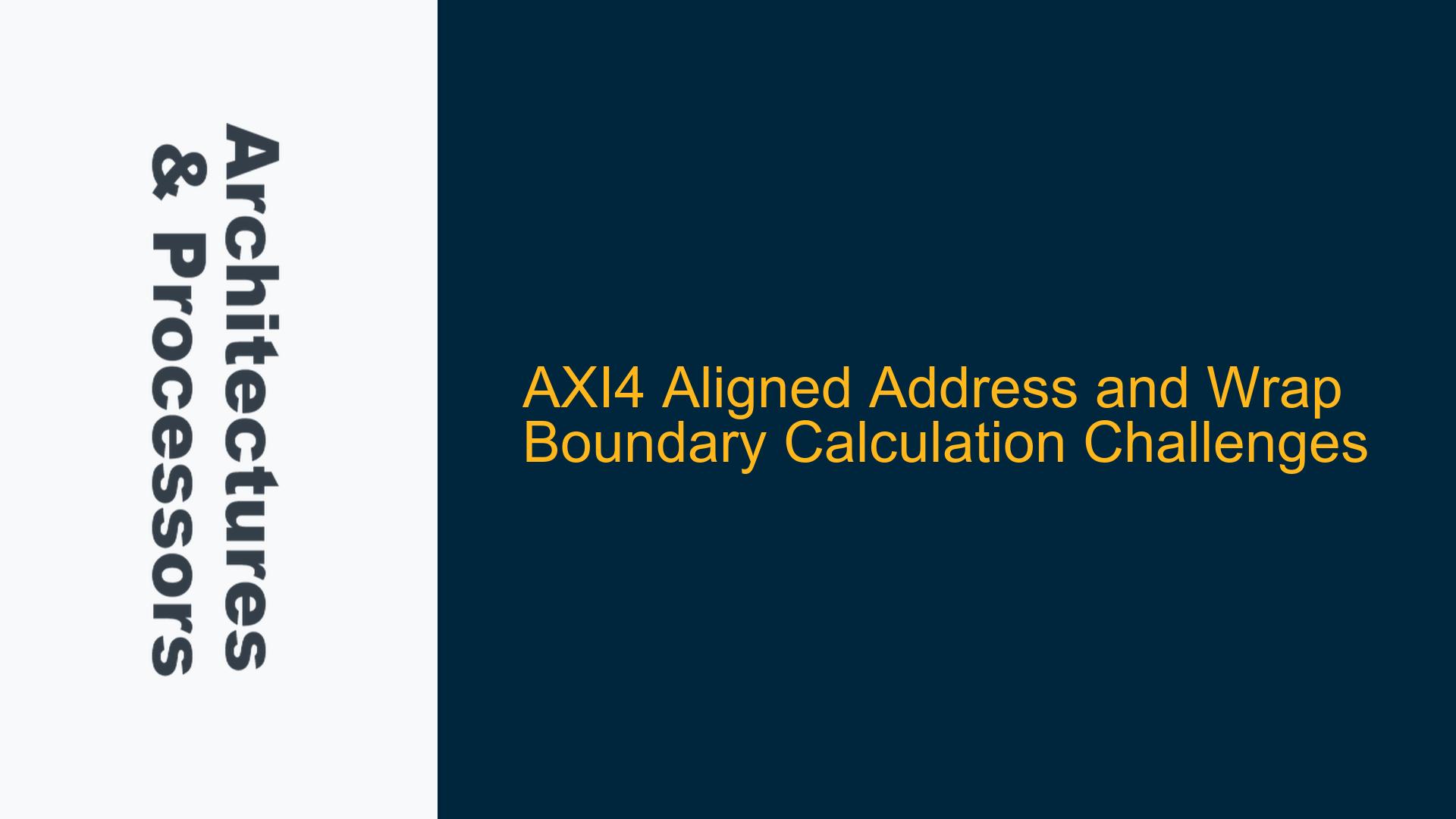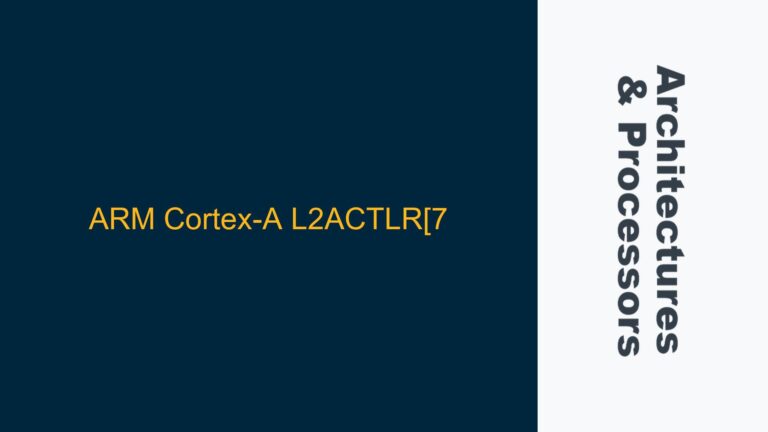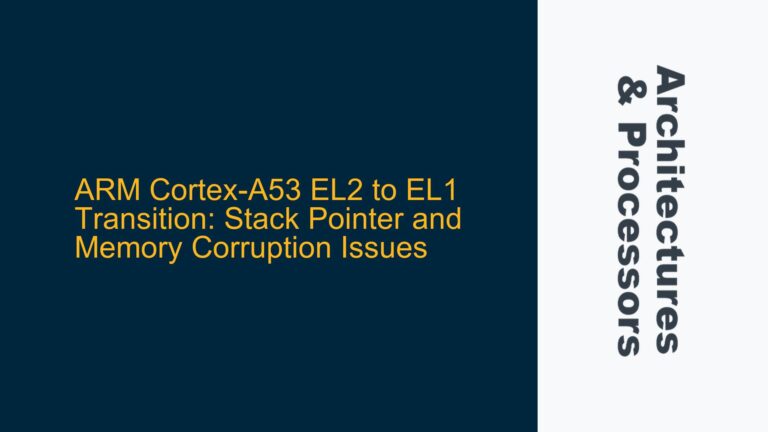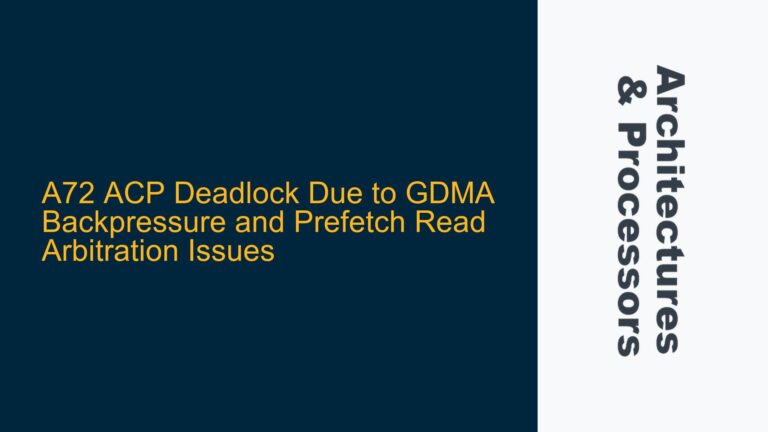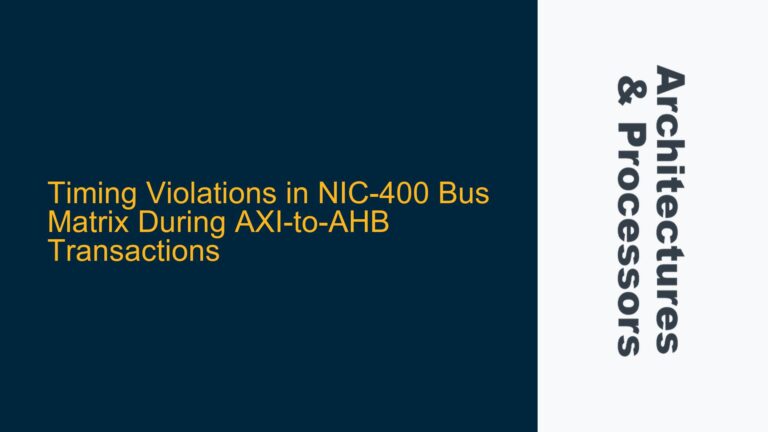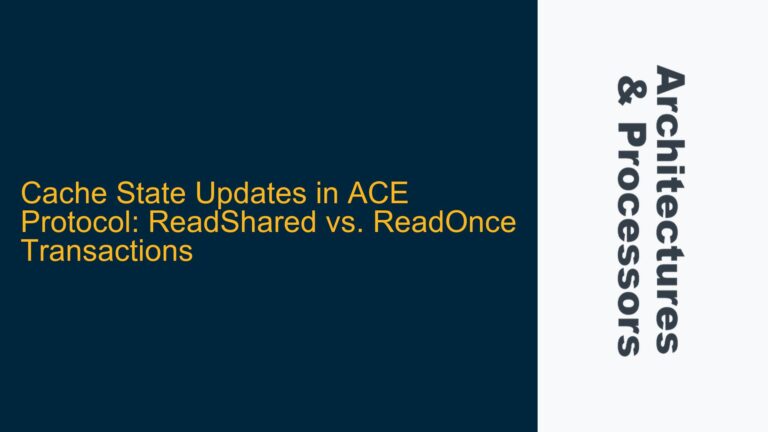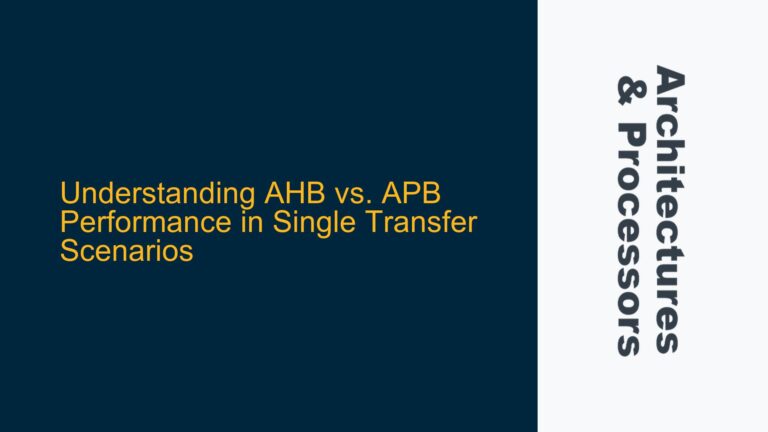AXI4 Aligned Address Calculation for INCR Bursts
In AXI4, the concept of an aligned address is crucial for understanding how address generation works during INCR (incrementing) burst transactions. An aligned address ensures that each subsequent transfer in a burst adheres to the alignment requirements specified by the AxSIZE signal. The AxSIZE signal defines the number of bytes transferred in each beat of the burst, and the address for each transfer must be aligned to this size.
The formula for calculating the aligned address is as follows:
[ \text{Aligned_Address} = \left(\text{INT}\left(\frac{\text{Start_Address}}{\text{Number_Bytes}}\right)\right) \times \text{Number_Bytes} ]
Here, the INT function truncates the division result to the nearest integer towards zero. The Number_Bytes is derived from the AxSIZE signal, where AxSIZE specifies the number of bytes per transfer. For example, if AxSIZE is 4, then Number_Bytes is 4, indicating a 32-bit transfer.
Consider a scenario where the start address is 0x13, and the AxSIZE is 4 (indicating 4 bytes per transfer). The aligned address calculation would be:
[ \text{Aligned_Address} = \left(\text{INT}\left(\frac{0x13}{4}\right)\right) \times 4 = 0x10 ]
This means that the first transfer will occur at the unaligned start address 0x13, but the subsequent transfers will be aligned to 0x10, 0x14, 0x18, and so on. This alignment ensures that each transfer adheres to the AxSIZE alignment requirements.
The aligned address is particularly important in INCR bursts because it allows the AXI4 protocol to handle unaligned start addresses gracefully. Without this alignment, the address generation logic would need to handle complex edge cases where the start address is not aligned to the transfer size, leading to potential errors in address generation.
Wrap Boundary Calculation for WRAP Bursts
The wrap boundary is a critical concept in AXI4 WRAP burst transactions. WRAP bursts are typically used in cache line accesses, where the critical data item is accessed first, followed by the remaining data in the cache line. The wrap boundary defines the address at which the burst wraps back to the start of the cache line.
The formula for calculating the wrap boundary is as follows:
[ \text{Wrap_Boundary} = \left(\text{INT}\left(\frac{\text{Start_Address}}{\text{Number_Bytes} \times \text{Burst_Length}}}\right)\right) \times \text{Number_Bytes} \times \text{Burst_Length} ]
In this formula, Burst_Length is the number of transfers in the burst, and Number_Bytes is derived from the AxSIZE signal. The wrap boundary calculation ensures that the burst wraps back to the start of the cache line after reaching the end of the line.
Consider a WRAP burst with a start address of 0x18, a burst length of 4, and an AxSIZE of 4 (indicating 4 bytes per transfer). The wrap boundary calculation would be:
[ \text{Wrap_Boundary} = \left(\text{INT}\left(\frac{0x18}{4 \times 4}\right)\right) \times 4 \times 4 = 0x10 ]
This means that the burst will start at 0x18, increment to 0x1C, and then wrap back to 0x10 and 0x14 to complete the burst. The wrap boundary ensures that the burst adheres to the cache line boundaries, which is essential for maintaining cache coherency and performance.
It is important to note that WRAP bursts must start at an aligned address. This is because the wrap boundary calculation assumes that the start address is aligned to the AxSIZE value. If the start address is not aligned, the wrap boundary calculation will be invalid, leading to incorrect address generation and potential protocol violations.
Addressing Misconceptions and Common Pitfalls
One common misconception is that the aligned address and wrap boundary are the same. While they may appear similar in certain scenarios, they serve different purposes in the AXI4 protocol. The aligned address is used in INCR bursts to ensure that each transfer adheres to the AxSIZE alignment requirements, while the wrap boundary is used in WRAP bursts to define the address at which the burst wraps back to the start of the cache line.
Another common pitfall is the incorrect application of the wrap boundary calculation to INCR bursts. The wrap boundary calculation is only relevant for WRAP bursts, and applying it to INCR bursts can lead to incorrect address generation. Similarly, using the aligned address calculation for WRAP bursts is unnecessary, as WRAP bursts must start at an aligned address.
A critical issue arises when the start address is not aligned for a WRAP burst. Since WRAP bursts must start at an aligned address, any attempt to use an unaligned start address will result in a protocol violation. This is because the wrap boundary calculation assumes that the start address is aligned, and an unaligned start address will lead to incorrect wrap boundary calculation and address generation.
To avoid these pitfalls, it is essential to understand the differences between INCR and WRAP bursts and apply the appropriate address calculations for each burst type. Additionally, it is crucial to ensure that the start address is aligned for WRAP bursts, as this is a fundamental requirement of the AXI4 protocol.
Practical Implementation and Verification Strategies
When implementing AXI4 address generation logic, it is essential to carefully consider the alignment and wrap boundary calculations. The following strategies can help ensure correct implementation and verification:
-
Address Alignment Logic: Implement separate logic blocks for handling aligned addresses in INCR bursts and wrap boundaries in WRAP bursts. This separation ensures that the correct calculations are applied for each burst type.
-
Start Address Validation: Before initiating a WRAP burst, validate that the start address is aligned to the AxSIZE value. If the start address is not aligned, the burst should be rejected, and an error should be signaled.
-
Simulation and Verification: Use simulation environments to verify the address generation logic for both INCR and WRAP bursts. Create test cases that cover various start addresses, burst lengths, and AxSIZE values to ensure that the address generation logic handles all scenarios correctly.
-
Protocol Compliance Checks: Implement protocol compliance checks to ensure that the address generation logic adheres to the AXI4 protocol specifications. These checks should include verifying that the aligned address and wrap boundary calculations are applied correctly and that the start address is aligned for WRAP bursts.
-
Debugging and Diagnostics: Implement debugging and diagnostics features to help identify and resolve issues in the address generation logic. These features should include logging of address calculations, burst types, and protocol violations to aid in debugging.
By following these strategies, designers can ensure that the AXI4 address generation logic is implemented correctly and that the system adheres to the AXI4 protocol specifications. This will help avoid common pitfalls and ensure robust and reliable operation of the AXI4 interface.
Conclusion
Understanding the differences between aligned address and wrap boundary calculations in AXI4 is crucial for correct implementation and verification of AXI4-based systems. The aligned address is used in INCR bursts to ensure that each transfer adheres to the AxSIZE alignment requirements, while the wrap boundary is used in WRAP bursts to define the address at which the burst wraps back to the start of the cache line.
By carefully implementing and verifying the address generation logic, designers can avoid common pitfalls and ensure that the system adheres to the AXI4 protocol specifications. This will result in robust and reliable operation of the AXI4 interface, leading to improved performance and reduced risk of protocol violations.
